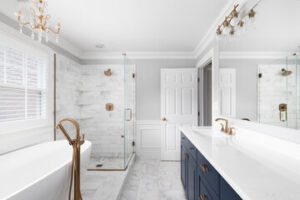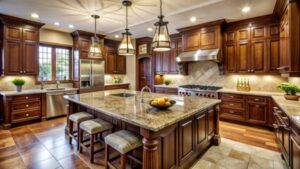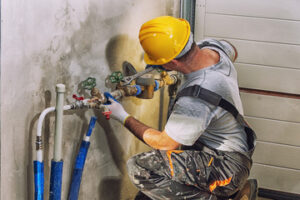Altitude House Buyers today have more options and information than ever before. The process of purchasing a home has evolved with shifting economic conditions and lifestyle trends. Buyers are no longer focused solely on location and size. Personalization and long-term value have become key factors.

Modern house buyers seek properties that align with their lifestyle. Open floor plans and flexible living spaces have gained popularity. Buyers value natural light, outdoor access, and energy efficiency. Smart home features are also in high demand.
Technology plays a significant role in how house buyers explore options. Virtual tours and online listings provide convenience and immediate access. Buyers can compare properties without leaving their homes. Detailed information and high-quality visuals shape initial impressions.
Financial considerations remain a top priority for house buyers. Interest rates, loan terms, and maintenance costs influence decisions. Buyers seek properties with low operating costs and long-term value. Transparent pricing and clear disclosures build buyer confidence.
Sustainability has become a major factor for modern buyers. Energy-efficient appliances and solar panels are highly valued. Recycled materials and eco-friendly designs appeal to environmentally conscious buyers. Lower utility costs and reduced carbon footprints increase property desirability.
Location preferences have shifted with remote work options. Buyers prioritize access to reliable internet and home office spaces. Proximity to green spaces and essential services remains important. Flexible work arrangements allow buyers to consider wider geographic areas.
Safety and security remain crucial for house buyers. Gated communities, surveillance systems, and secure entry points are in demand. Buyers look for smart locks and security cameras as standard features. A sense of community and low crime rates enhance property value.
House buyers value storage and organization options. Built-in closets, kitchen pantries, and garage storage are key selling points. Buyers seek creative storage solutions for small spaces. Efficient use of space improves comfort and functionality.
Customization is a growing trend among house buyers. Buyers want the ability to modify floor plans and finishes. Personal touches like unique cabinetry and flooring enhance satisfaction. Customization options increase emotional connection to the property.
Outdoor spaces have become essential for house buyers. Patios, decks, and gardens extend living areas. Buyers seek privacy and natural landscaping for relaxation. Functional outdoor spaces enhance the overall value of a home.
Smart technology integration is a priority for many buyers. Automated lighting, thermostats, and appliances improve convenience. Buyers prefer systems that are easy to use and compatible with multiple platforms. Smart home features increase efficiency and security.
Buyers place high importance on natural materials and finishes. Hardwood floors, stone countertops, and exposed beams appeal to modern tastes. Neutral color palettes create a sense of warmth and versatility. High-quality materials signal long-term durability.
The demand for multi-generational living spaces is increasing. Buyers seek homes with separate suites or in-law apartments. Flexible layouts accommodate extended family members. Privacy and independence remain important within shared spaces.
Health and wellness have influenced house buying decisions. Buyers value good air quality, natural ventilation, and non-toxic materials. Access to walking paths and fitness facilities enhances appeal. Homes designed with wellness in mind increase buyer satisfaction.
Renovation potential is attractive to many buyers. Buyers look for properties with structural integrity and room for updates. Open layouts and high ceilings allow for creative modifications. Buyers seek a balance between character and modern convenience.
Buyers often research neighborhood trends before making decisions. School ratings, local amenities, and future development plans influence value. Buyers prioritize walkability and access to public transportation. Community reputation and stability impact long-term satisfaction.
Energy efficiency remains a top priority for house buyers. Insulated windows, efficient HVAC systems, and solar panels reduce costs. Buyers prefer homes with low utility bills and minimal environmental impact. Long-term savings increase property appeal.
Buyers are drawn to homes with modern architectural styles. Clean lines, open spaces, and minimalist design reflect current trends. Large windows and indoor-outdoor flow enhance natural lighting. Buyers seek homes with unique architectural character.
Flexible living spaces have gained importance among buyers. Multi-purpose rooms that serve as offices or guest rooms increase value. Buyers appreciate creative storage solutions and convertible furniture. Adaptable spaces reflect changing lifestyle needs.
House buyers consider maintenance requirements when selecting a property. Low-maintenance landscaping and durable materials reduce long-term costs. Buyers seek homes with simple, functional designs. Easy-to-clean surfaces and weather-resistant materials increase convenience.
New construction homes attract buyers seeking modern features and warranties. Buyers value the ability to customize finishes and floor plans. Energy-efficient systems and smart technology are expected in new builds. Warranties and builder reputation influence buyer confidence.
Historic homes appeal to buyers seeking charm and character. Original woodwork, vintage fixtures, and architectural details add value. Buyers balance the desire for authenticity with the need for modern updates. Preservation of original features increases long-term appeal.
Buyers are increasingly aware of future resale value. Properties in desirable neighborhoods with growing infrastructure hold value. Quality construction and modern amenities increase marketability. Buyers seek homes with lasting appeal and investment potential.
Buyers are more informed and strategic than ever. They research property values and market trends before making offers. Online tools provide buyers with comparative data and price insights. Informed buyers negotiate confidently and make competitive offers.
Buyers prefer homes with integrated smart systems. Centralized control of lighting, climate, and security increases convenience. Compatibility with voice assistants and mobile apps enhances functionality. Buyers seek systems that simplify daily life.
Buyers often assess natural light and ventilation during viewings. South-facing windows and skylights increase comfort and energy efficiency. Cross-ventilation improves air quality and reduces cooling costs. Homes with natural light feel more inviting and spacious.
Buyers value outdoor privacy and landscaping. Fenced yards, hedges, and strategic planting increase privacy. Outdoor kitchens and seating areas enhance entertaining options. Buyers seek a balance between open views and private spaces.
Buyers are drawn to homes with unique architectural features. Vaulted ceilings, exposed beams, and custom staircases add character. Thoughtful design details enhance the overall impression. Buyers value homes with distinctive and memorable elements.
Buyers consider long-term maintenance when selecting materials. Hardwood floors and stone countertops age well with minimal care. Low-maintenance siding and roofing reduce future costs. Durable finishes improve resale value and overall satisfaction.
Buyers seek homes with seamless indoor-outdoor transitions. Large sliding doors and covered patios increase usability. Outdoor heaters and ceiling fans extend seasonal use. Homes with smooth transitions feel more spacious and connected.
Buyers prefer homes with flexible dining and entertainment areas. Open kitchens with islands increase social interaction. Dining areas that accommodate both casual and formal settings are valued. Buyers seek comfortable and functional hosting spaces.
Buyers are influenced by the quality of home construction. Solid foundations, soundproofing, and insulation improve comfort. Well-finished surfaces and high-quality fixtures reflect craftsmanship. Buyers seek reassurance through visible construction quality.
Buyers appreciate homes with creative storage solutions. Built-in shelving, under-stair storage, and closet organizers maximize space. Functional storage improves daily convenience. Buyers value homes with both concealed and display options.
Buyers are drawn to homes with balanced proportions and flow. Open floor plans that maintain distinct zones increase comfort. Symmetry in design creates a sense of order and harmony. Buyers seek homes with intuitive layouts.
Buyers often prioritize move-in readiness. Fresh paint, updated fixtures, and clean finishes create a positive impression. Buyers prefer homes with modern appliances and functional systems. Move-in ready homes reduce the stress of immediate repairs.
Buyers value homes with personalized details. Custom tile work, unique lighting, and statement fixtures add character. Buyers seek homes that reflect individual style. Thoughtful details create emotional connection and lasting satisfaction.
Buyers are increasingly mindful of environmental impact. Homes with sustainable materials and low energy consumption hold appeal. Buyers value rainwater collection systems and drought-resistant landscaping. Eco-friendly features increase both comfort and efficiency.
Buyers seek homes that accommodate evolving family needs. Extra bedrooms, flexible office spaces, and guest suites add value. Adaptable floor plans support lifestyle changes over time. Buyers prefer homes that offer both stability and versatility.








